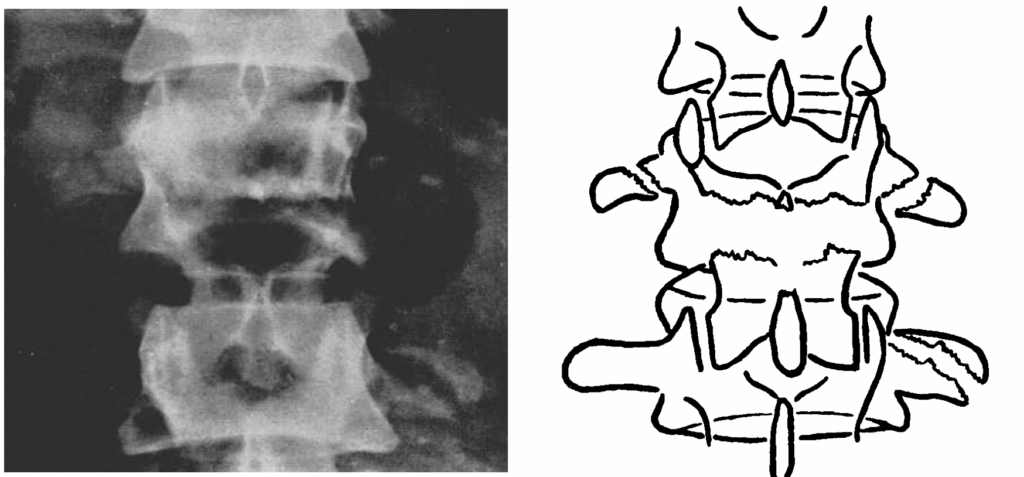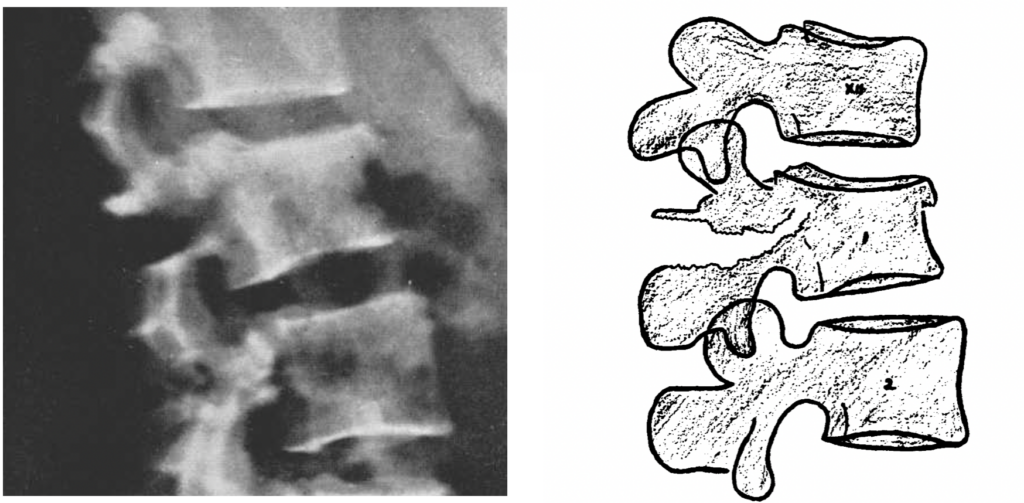George Chance
George Quentin Chance (1904 – -) was an Irish radiologist. He first described the eponymously termed Chance fracture in 1948
Biography
- Born on September 20, 1904 in South Dublin, Ireland
- 1928 – MB BCh BAO, Trinity College Dublin
- House surgeon, Worcester General Infirmary
- House surgeon, Salford Royal Hospital
- 1938 – DMRE (Diploma in Medical Radiology), University of Cambridge
- Senior assistant medical officer, Sheffield Radium Center
- Member British Institute of Radiology and Fracture Radiologists
- Consultant Radiologist at Manchester Municipal Hospital
- 1947 – Director of Diagnostic Radiology, Derbyshire Royal Infirmary, Derby
- Honorary fellow of the Royal College of Surgeons in Ireland
- Died
Medical Eponyms
Chance fracture (1948)
The Chance fracture is a transverse fracture through a vertebral body and neural arch. These injuries typically occur at the thoracolumbar junction or in the upper lumbar spine. When the anterior ligaments are also injured, this injury may be a fracture-dislocation, carrying a higher incidence of neurological injury. With these fractures, one must always be alert to the high likelihood of injury to the bowel and other abdominal viscera.
in 1948, Chance published a Note on a type of Flexion Fracture of the Spine in the British Journal of Radiology. Initially he described a purely osseous injury in his case series of three patients.

The fracture which I illustrate is a true flexion fracture, though of a rarer type. It consists of a horizontal splitting of the spine and neural arch, ending in an upward curve which usually reaches the upper surface of the body just in front of the neural foramen.
In my three cases there has been very little wedging of the vertebral body, no dislocation of the apophyseal joints, nor has there been any cord damage…As there is no major ligamentous damage, the upper half of the fractured neural arch is firmly fixed to the normal arch of the vertebra above, and similarly the lower half is fixed to the vertebra below. The outline of these halves, in a horizontal plane, is therefore still undisturbed, so that a simple hyperextension of the spine must inevitably bring the two halves into perfect anatomical apposition, and give a near 100 per cent, prognosis.

Major Publications
- Cullen CH, Chance GQ. Air arthrography in lesions of the semilunar cartilages. Br J Surg. 1943; 30(119): 241-245.
- Chance GQ. Note on a type of flexion fracture of the spine. Br J Radiol. 1948; 21(249): 452.
- Doupe J, Cullen CH, Chance GQ. Post-traumatic pain and the causalgic syndrome. J Neurol Psychiatry. 1944; 7(1-2): 33–48.
References
Biography
- Derbyshire Royal Infirmary. Annual report and statement of accounts. 1947: 4
- Hunter TB, Peltier LF, Lund PJ. Radiologic History Exhibit Musculoskeletal Eponyms: Who Are Those Guys? Radiographics. 2000 May-Jun;20(3):819-36
Eponymous terms
- Kingsbury-Smith R. Chance and his fracture. Trauma. 2008; 10(1): 13-15.
- Nicoll EA. Fractures of the dorso-lumbar spine. J Bone Joint Surg Br. 1949; 31B(3): 376-94.
- Aebi M. Classification of thoracolumbar fractures and dislocations. Eur Spine J. 2010;19 Suppl 1 : S2-7
- Thakur JD et al. George Chance and Frank Holdsworth: Understanding Spinal Instability and the Evolution of Modern Spine Injury Classification Systems. Neurosurgery. 2020 Apr 16. pii: nyaa081. doi: 10.1093/neuros/nyaa081.

